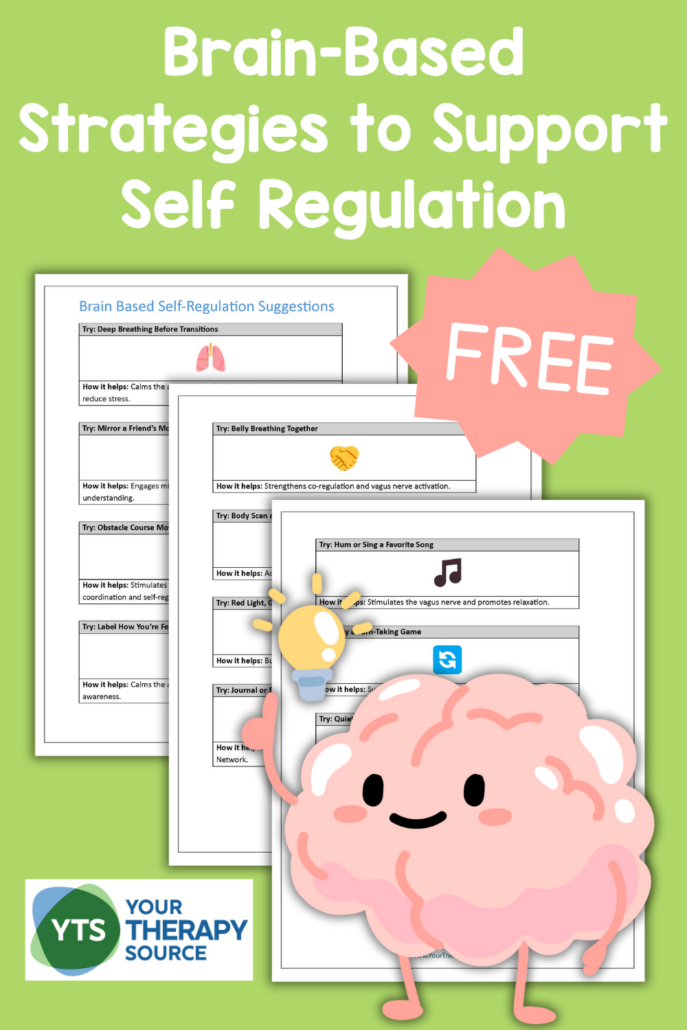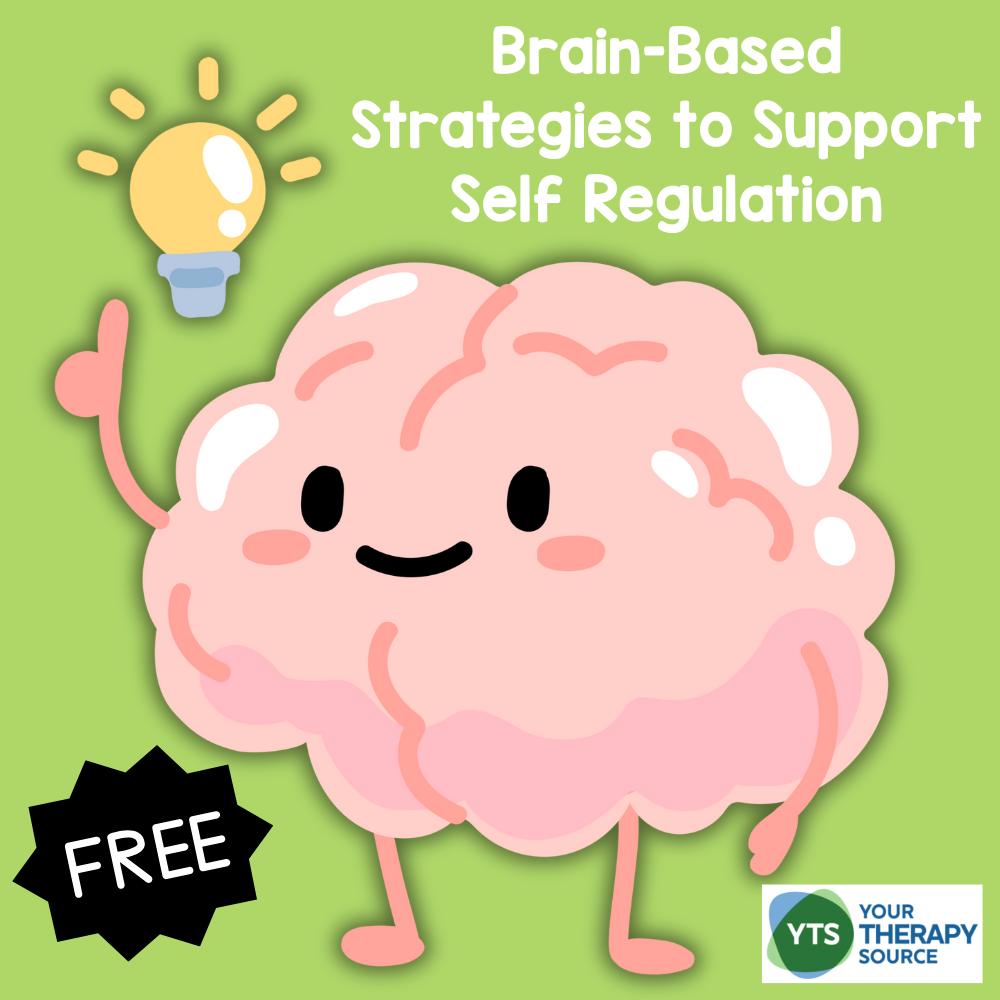Brain Based Self Regulation Strategies for Kids and Adults
Understanding how the brain influences behavior gives parents, educators, and therapists powerful tools to help children develop emotional balance. Rather than relying on surface-level tips or one-size-fits-all solutions, brain based self regulation strategies offer practical, targeted support grounded in neuroscience. You can download a FREE printable of these strategies at the bottom of this post. These suggestions are from Issue #3 of Raising Self-Regulated Kids: Finding Emotional Balance. This issue explores how different brain regions contribute to emotions, decision-making, and connection. With that knowledge, we can respond to children’s behaviors with more empathy and teach them how to better regulate themselves.

Why Brain Science Matters for Self-Regulation
Self-regulation isn’t just about “calming down.” It’s about what’s happening inside a child’s brain and body. For example:
- The amygdala processes emotional threats and triggers fight, flight, or freeze responses.
- The prefrontal cortex helps with decision-making, impulse control, and planning.
- The hypothalamus regulates the body’s stress responses like heart rate and hormones.
- The mirror neuron system supports empathy, connection, and social understanding.
When we understand what’s happening under the surface, we can offer kids the right tools at the right time.

Issue #3: Building Emotional Balance
5 Brain-Based Self-Regulation Strategies to Try
Here are five simple but powerful strategies that are directly linked to supporting brain function and emotional balance:
🫁 Deep Breathing Before Transitions
Why it works: Transitions can feel stressful for kids because they involve uncertainty and change. Deep breathing activates the vagus nerve, helping to calm the amygdala and send a signal of safety to the body.
Try it: Before a child switches activities (like ending recess or starting homework), invite them to take 3–5 slow belly breaths to reset.
🪞 Mirror a Friend’s Movements
Why it works: This playful activity activates the mirror neuron system, which supports empathy and social awareness. It helps kids feel seen, connected, and understood.
Try it: During partner play, ask one child to lead simple movements (stretching, clapping, dancing) while the other mirrors them.
🏃♂️ Obstacle Course Movement Break
Why it works: Physical movement stimulates the basal ganglia and cerebellum, which support coordination and self-regulation. It also offers needed sensory input to help reset the nervous system.
Try it: Set up a quick indoor or outdoor course using pillows, cones, or chairs for crawling, hopping, and balancing.
💬 Label How You’re Feeling
Why it works: Putting emotions into words engages the prefrontal cortex and helps calm the amygdala. Naming feelings builds emotional vocabulary and supports long-term self-awareness.
Try it: Use visual charts or prompts like “I feel ___ because ___” to encourage children to check in emotionally.
🤝 Belly Breathing Together
Why it works: When done with a caregiver or peer, co-regulated breathing boosts vagus nerve tone and models emotional regulation. This strengthens trust, safety, and connection.
Try it: Sit next to a child and breathe slowly together. You can even place a small stuffed animal on their belly and watch it rise and fall.
Want More Strategies Like These?
These five strategies are part of a larger printable set called Brain-Based Self-Regulation Strategies, which includes 12 visual cards with practical, research-informed techniques linked to brain systems like the amygdala, prefrontal cortex, vagus nerve, and more.
Grab your free printable and keep these strategies on a ring, in a calm-down corner, or send them home with families! Looking for even more tools and insights?
Issue #3: Raising Self-Regulated Kids – Finding Emotional Balance is your complete guide to understanding the brain systems behind behavior—and what to do to support them at home or school.



